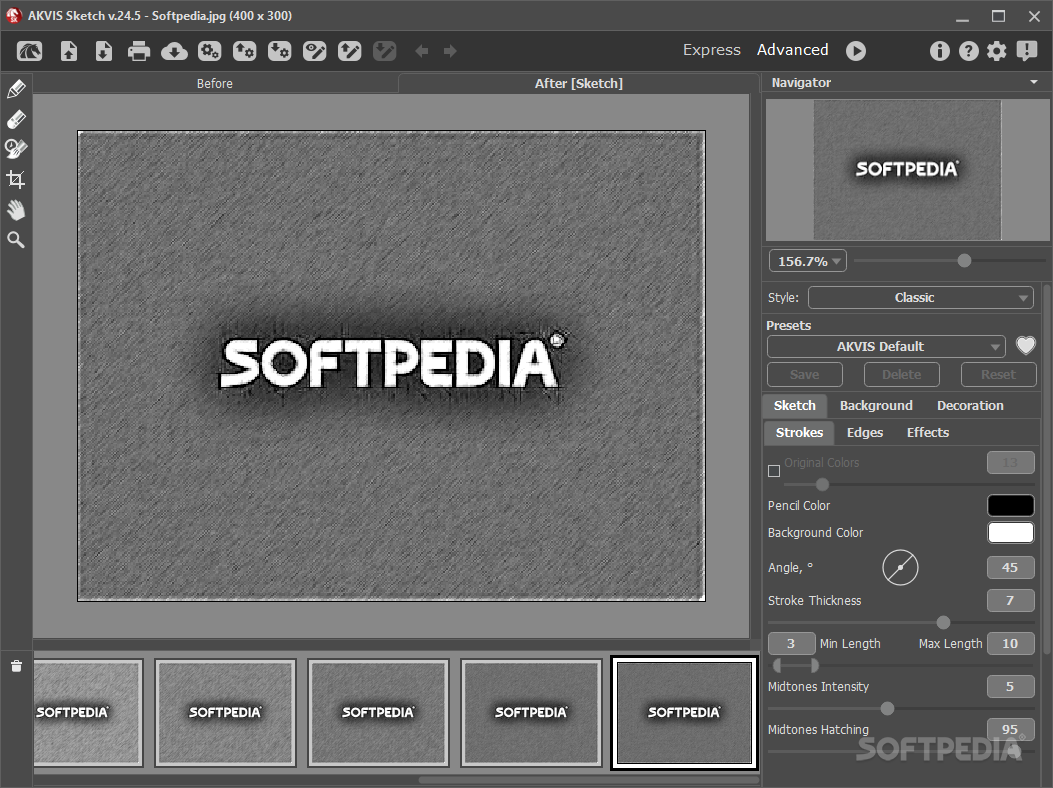

- Akvis sketch 16 full mega how to#
- Akvis sketch 16 full mega install#
- Akvis sketch 16 full mega driver#
- Akvis sketch 16 full mega software#
Minimum supported i2c clock speed is 100kHz, which sets minimum processor speed at maximum of 62 modules that can be addressed on the same i2c line. It should be a value between 0 and 61, which gives a The i2c address should be the value of the A5-A0 pins, as the class handles the Typically called during class instantiation, before setup(). The default constructor values of the library, if left unspecified, is i2c address B000000, and i2c Wire class instance Wire 400kHz.įrom PCA9685.h, in class PCA9685, when in hardware i2c mode:
Akvis sketch 16 full mega software#
The constructor allows one to set the module's i2c address, i2c Wire class instance, and lastly i2c clock speed (most i2c parameters being ommitted when in software i2c mode). The library's class object must first be instantiated, commonly at the top of the sketch where pin setups are defined (or exposed through some other mechanism), which makes a call to the library's class constructor. There are several initialization mode settings exposed through this library that are used for more fine-tuned control. Uncomment or -D this define to enable debug output. Uncomment or -D this define to swap PWM low(begin)/high(end) phase values in register reads/writes (needed for some chip manufacturers). #define PCA9685_ENABLE_SOFTWARE_I2C // Uncomment or -D this define to enable use of the software i2c library (min 4MHz+ processor).

Note that editing such directly will affect all other projects compiled on your system using those modified platform framework files.
Akvis sketch 16 full mega how to#
Note that editing the library's main header file directly will affect all projects compiled on your system using those modified library files.Īlternatively, you may also refer to on how to define custom build flags manually via modifying the platform.txt file. While editing the main header file isn't ideal, it is often the easiest given the Arduino IDE's limited custom build flag support. You may edit and uncomment these lines directly, or supply them via custom build flags. There are several defines inside of the library's main header file that allow for more fine-tuned control of the library. Otherwise, simply download this library and extract its files into a PCA9685-Arduino folder in your Arduino custom libraries folder, typically found in your Documents\Arduino\libraries folder (Windows), or ~/Documents/Arduino/libraries/ folder (Linux/OSX).
Akvis sketch 16 full mega install#
The easiest way to install this library is to utilize the Arduino IDE library manager, or through a package manager such as PlatformIO. The datasheet for the IC is available at. Made primarily for Arduino microcontrollers, but should work with PlatformIO, ESP32/8266, Teensy, and others - although one might want to ensure BUFFER_LENGTH (or I2C_BUFFER_LENGTH) and WIRE_INTERFACES_COUNT is properly defined for any architecture used. It supports a wide range of available functionality, from setting the output PWM frequecy, allowing multi-device proxy addressing, and provides an assistant class for working with Servos.
Akvis sketch 16 full mega driver#
This library allows communication with boards running a PCA6985 16-channel PWM driver module. Licensed under the copy-left GNU GPL v3 license.Ĭreated by Kasper Skårhøj, August 3rd, 2012. Library to control a PCA9685 16-channel PWM driver module from an Arduino board. Arduino Library for the PCA9685 16-Channel PWM Driver Module.


 0 kommentar(er)
0 kommentar(er)
